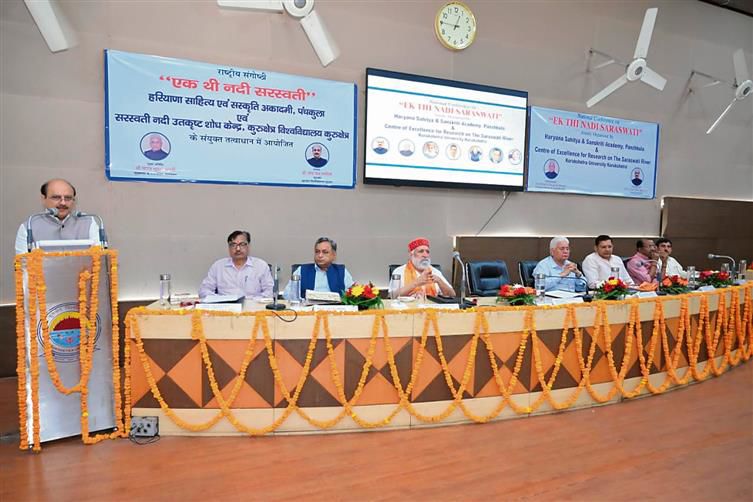Kurukshetra: Conference on Sarasvati River
Kurukshetra: A national conference on Sarasvati River, ‘Ek Thi Nadi Sarasvati’, was jointly organised by the Centre of Excellence for Research on Sarasvati River (CERSR), Kurukshetra University and Haryana Sahitya and Sanskriti Akadami at Kurukshetra University on Tuesday. In his address, Bharat Bhushan Bharti, political adviser to the Chief Minister and president of Sarasvati Nadi Shodh Sansthan, said the Haryana Government is making effors to conserve rivers and ponds, which are the heritage of the state. He said the government is committed to the revival of Sarasvati River. He also stressed upon water conservation. Kurukshetra University Vice-Chancellor Som Nath Sachdeva, who presided over the event, stressed the importance of Sarasvati River in the development of Indian civilisation, its culture and heritage. AR Chaudhri, director, CERSR, said, “The research by the CERSR has revealed that palaeochannels of Sarasvati River form a 3,200-km-long web network in Haryana and all Harappan sites are located at a distance of less than 500 metre from these channels. The oldest civilisation remains have been found in Bhirrana, which date back to about 8,500 years. The culture and traditions of the people of Haryana represent the oldest continuing living heritage Sarasvati for more than 9,000 years.”
Miyawaki forest to be developed
Mahendragarh: The Central University of Haryana (CUH), Mahendragarh, has announced the launch of an environmental project aimed at developing the Miyawaki forest on the campus. The Miyawaki method, pioneered by Japanese botanist Akira Miyawaki, involves the creation of dense and native forests in a short span of time. This technique promotes rapid growth and high biodiversity by planting a variety of native species close together. The university said low-maintenance forest can grow up to 10 times faster and become 30 times denser than conventional forests. Tankeshwar Kumar, Vice-Chancellor, CUH, said, “The Miyawaki forest initiative aligns perfectly with our vision of fostering sustainable development and environmental stewardship. We are excited to see our campus become a model for green practices and ecological restoration.” District Forest Officer Raj Kumar said the Forest Department has planned to commence planting activities in the upcoming monsoon season and it would be a model for the whole district. He said more Miyawaki forests will be developed in other areas in the future. The proposed forest would cover approximately 2.5 acres of land on the campus. As part of the project, nearly 10,000 saplings will be planted.









